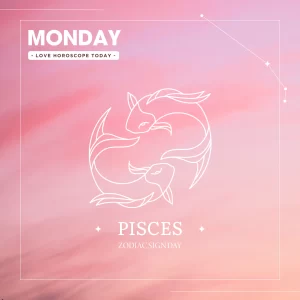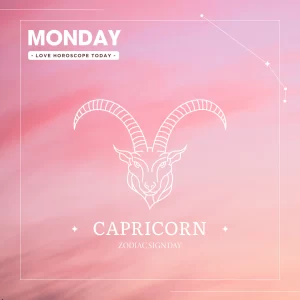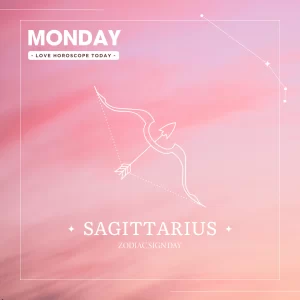
Scorpius, a zodiac constellation, finds its place in the Southern celestial hemisphere. Nestled between the constellations of Libra to the west and Sagittarius to the east, Scorpius is a venerable constellation with roots predating Greek astronomy. It’s among the 48 constellations cataloged by the Greek astronomer Ptolemy in the second century and is represented by the old astronomical symbol ♏︎.
Mythology
In Greek mythology, several myths attribute the constellation Scorpius to Orion. In one version of the tale, Orion boasted to the goddess Artemis and her mother, Leto, about his intention to slay every creature on Earth. In response, Artemis and Leto dispatched a scorpion to confront and kill Orion.[9] Their epic battle drew the attention of Zeus, who elevated both the valiant adversaries to the heavens as a reminder to mortals to restrain their excessive pride. Another rendition of the myth suggests that it was Apollo, Artemis’ twin brother, who sent the scorpion to eliminate Orion. This happened after Orion won the favor of the goddess by acknowledging her superiority. Following Zeus’s intervention, Orion hunts in the winter but seeks refuge during the scorpion’s summer reign. In both versions, Artemis pleaded with Zeus to raise Orion to the celestial sphere. In a separate Greek myth unrelated to Orion, the celestial scorpion encountered Phaethon while he was at the reins of his father Helios’ Sun Chariot.[10]
Origins
The Babylonians referred to this constellation as MUL.GIR.TAB, which translates to ‘the Scorpion.’ The name can be literally interpreted as ‘the creature with a burning sting.'[11] In certain ancient accounts, the constellation Libra was regarded as the Scorpion’s claws. Babylonians called Libra the Claws of the Scorpion, known as zibānītu in their language (similar to Arabic zubānā), and in Greek, it was referred to as χηλαι.[12]
Astrology
The Western astrological sign Scorpio doesn’t perfectly align with the astronomical constellation. In terms of astronomy, the sun passes through Scorpius for only six days, spanning from November 23 to November 28. Some of this variation is attributed to the presence of the constellation Ophiuchus, which is considered by only a few astrologers. Scorpius corresponds to the Hindu nakshatras Anuradha, Jyeshtha, and Mula.
Notable features
Scorpius boasts numerous bright stars, each with its own distinctive name and characteristics. Notable members of this constellation include:
Antares (α Sco), known as the “rival of Mars” due to its striking reddish hue.
β1 Sco (Graffias or Acrab), a triple star system.
δ Sco (Dschubba, “the forehead”).
θ Sco (Sargas, with an unknown origin for its name).
ν Sco (Jabbah).
ξ Sco.
π Sco (Fang).
σ Sco (Alniyat).
τ Sco (Paikauhale).
At the tip of Scorpius’s curved tail, you can find λ Sco (Shaula) and υ Sco (Lesath), both of which mean “sting.” Due to their proximity, λ Sco and υ Sco are sometimes referred to as the Cat’s Eyes.
These bright stars in the constellation create a pattern resembling a longshoreman’s hook, and most of them are massive members of the nearby OB association known as Scorpius–Centaurus.
The star δ Sco experienced a sudden increase in brightness, flaring from a stable 2.3 magnitude star to 1.9 in just a few weeks in July 2000. It has since become a variable star, fluctuating between magnitudes 2.0 and 1.6. This variability makes it the second brightest star in Scorpius at its brightest phase.
U Scorpii holds the distinction of being the fastest-known nova, with a period of about 10 years.
The close pair of stars ω1 Scorpii and ω² Scorpii, while appearing as an optical double, can be resolved by the unaided eye. One is a yellow giant, while the other is a blue B-type star belonging to the Scorpius-Centaurus Association.
Interestingly, what is now known as the star σ Lib was once designated as γ Sco, even though it falls well within the boundaries of Libra. In ancient Greek times, the entire constellation of Libra was considered to be the claws of Scorpius, known as Chelae Scorpionis. Later, during Roman times, the division into Libra was formalized.
Deep-sky objects
Scorpius, owing to its position astride the Milky Way, hosts a wealth of deep-sky objects, making it a treasure trove for astronomers. Among these celestial gems are:
Messier 6, famously known as the Butterfly Cluster.
Messier 7, recognized as the Ptolemy Cluster.
NGC 6231, situated near ζ² Sco.
Messier 4, a globular cluster.
Messier 80 (NGC 6093), another globular cluster of magnitude 7.3, located a distant 33,000 light-years from Earth. This compact Shapley class II cluster is highly concentrated and dense at its core. Charles Messier discovered M80 in 1781, and it became a site of exceptional interest in 1860 when Arthur von Auwers identified the nova T Scorpii within it.
Additionally, Scorpius features NGC 6302, aptly named the Bug Nebula, a bipolar planetary nebula. Another notable presence is NGC 6334, often referred to as the Cat’s Paw Nebula, which serves as both an emission nebula and a star-forming region.
Scorpio | Famous NBA players

Russell Westbrook
(1988.11.12)
Russell Westbrook III, born on November 12, 1988, in Long Beach, California, is an American professional basketball player. He has made a significant mark in the NBA, playing for teams such as the Oklahoma City Thunder, Houston Rockets, Washington Wizards, and Los Angeles Lakers.
Westbrook’s journey to NBA stardom began at Leuzinger High School, where he showcased his basketball prowess. He then took his talents to the University of California, Los Angeles (UCLA), where he played for two seasons before declaring for the NBA draft in 2008. The Seattle SuperSonics (now Oklahoma City Thunder) selected him with the fourth overall pick.
Throughout his illustrious career, Westbrook has been known for his explosive athleticism, unmatched energy, and triple-double prowess. He has achieved numerous accolades, including being a nine-time NBA All-Star and two-time NBA All-Star Game MVP. In the 2016-2017 season, he made history by averaging a triple-double for the entire season, a feat previously accomplished only by Oscar Robertson. For this outstanding performance, Westbrook was awarded the NBA Most Valuable Player (MVP).
Off the court, Westbrook is also a notable figure. He has been involved in various philanthropic activities, especially through his Why Not? Foundation, which aims to inspire children to dream big and never give up.
In recent years, Westbrook has transitioned between teams, playing for the Houston Rockets, Washington Wizards, and most recently, the Los Angeles Lakers. Regardless of the jersey he wears, Westbrook’s passion, dedication, and commitment to the game remain unwavering.
In conclusion, Russell Westbrook is not just a basketball player; he is a phenomenon. His on-court achievements, coupled with his off-court contributions, make him one of the most influential figures in the world of basketball. Whether you’re a fan of the teams he’s played for or just a lover of the game, Westbrook’s legacy is undeniable.
Related article
Pisces Love Horoscope Today – 2023.12.25
Pisces Love Horoscope Today Pisces Love Horoscope Today With Aries:...
Read MoreAquarius Love Horoscope Today – 2023.12.25
Aquarius Love Horoscope Today Aquarius Love Horoscope Today With Aries:...
Read MoreCapricorn Love Horoscope Today – 2023.12.25
Capricorn Love Horoscope Today Capricorn Love Horoscope Today With Aries:...
Read MoreSagittarius Love Horoscope Today – 2023.12.25
Sagittarius Love Horoscope Today Sagittarius Love Horoscope Today With and...
Read More







